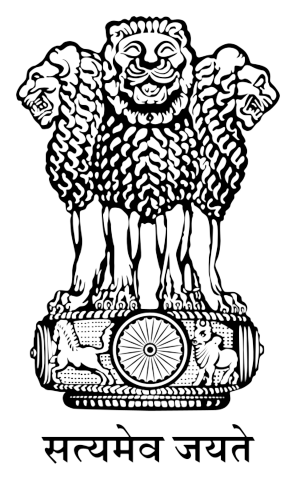Present RajBhavan
Much of the old structure has been retained with several additions. There is a private helipad, a private beach, a private jetty and a strategic place called Cannon point, where the old cannons are still to be seen. The building itself is at a height of a hundred and fifty four meters above sea level. The oldest portion which has, by and large, remained unaltered is the chapel.
The Cabo Palace is now called the Raj Bhavan; a name given to the residences of the Governors of States in India. It is one of the finest residences of Indian Governors. Above anything else, it is certainly the oldest as no other residence of a Governor of a State in India had its origin to over four hundred years in the past. The official reception area consists of a large hall called the Durbar Hall which is used at the time of receptions, the swearing-in-ceremony of Governors, the Chief Minister, and the Council of Ministers. The Dining room can seat thirty persons. There are private sitting rooms and a private dining room. The living quarters of the Governor and his family are on the same floor. A glazed verandah runs along the entire portion overlooking the Mandovi bay and the Arabian Sea giving one a feeling of being on the deck of a large ship.
There are three suites and seven double-rooms for guests. The offices of the Governor, his secretariat and staff are located on the ground floor in a separate annex.
The Raj Bhavan has a fine collection of Bohemian chandeliers, Chinese porcelain, silver and furniture. The most remarkable are the beautiful pieces of antique Chinese porcelain presumably manufactured in Canton. Amongst these are five tall Cantonese vases and two large-sized Cantonese bowls having the coat of arms with an inscription ???Governo Geral de India???. There in also a depleted set of crockery of a similar design with the same coat of arms. All these had been specially ordered for the use of the Portuguese Governor-General. They depict Chinese couples in discussion with each other with flowery designs on the sides. It is interesting to note that even though the Portuguese-held territories in India were only a speck compared to British India, the Portuguese Continued to refer to their Governor-General as though he held away over the whole of India.
Each king of Portugal had his own coat of arms. The Chinese porcelain can therefore be dated to the reign of King Dom Luis I. He was born on 31 October 1838 and succeeded his brother on 27 December 1861. He ruled till 1889. This Chinese porcelain must have been ordered during the reign of Don Luis I as a tribute to him. In all probability it must have been done by Governor-General Jose Ferreira Pestana who was the Governor of Goa from 1864 to 1871 and had made major renovations to the Cabo Palace during his tenure.
There is also an excellent collection of wooden furniture of very high quality and with exquisite workmanship. It is rather typical of the finest pieces of Goan furniture which was very popular in the nineteenth and twenteenth centuries.
A set of intricately carved chairs are remarkable for the fact that Hindu Gods and temples have been carved on them. In the later centuries complete harmony between Christians and Hindus was very evident in Goa.
The Cabo de Palace or Raj Niwas is now known as Raj Bhavan, as are residences of other Governors of states of Union of India are known. Though it covers an area of around 88 acres, the constructed or developed area under gardens is only 10 acres. Rest of the area is under forest cover. This forest cover boasts of a rich flora and fauna.




